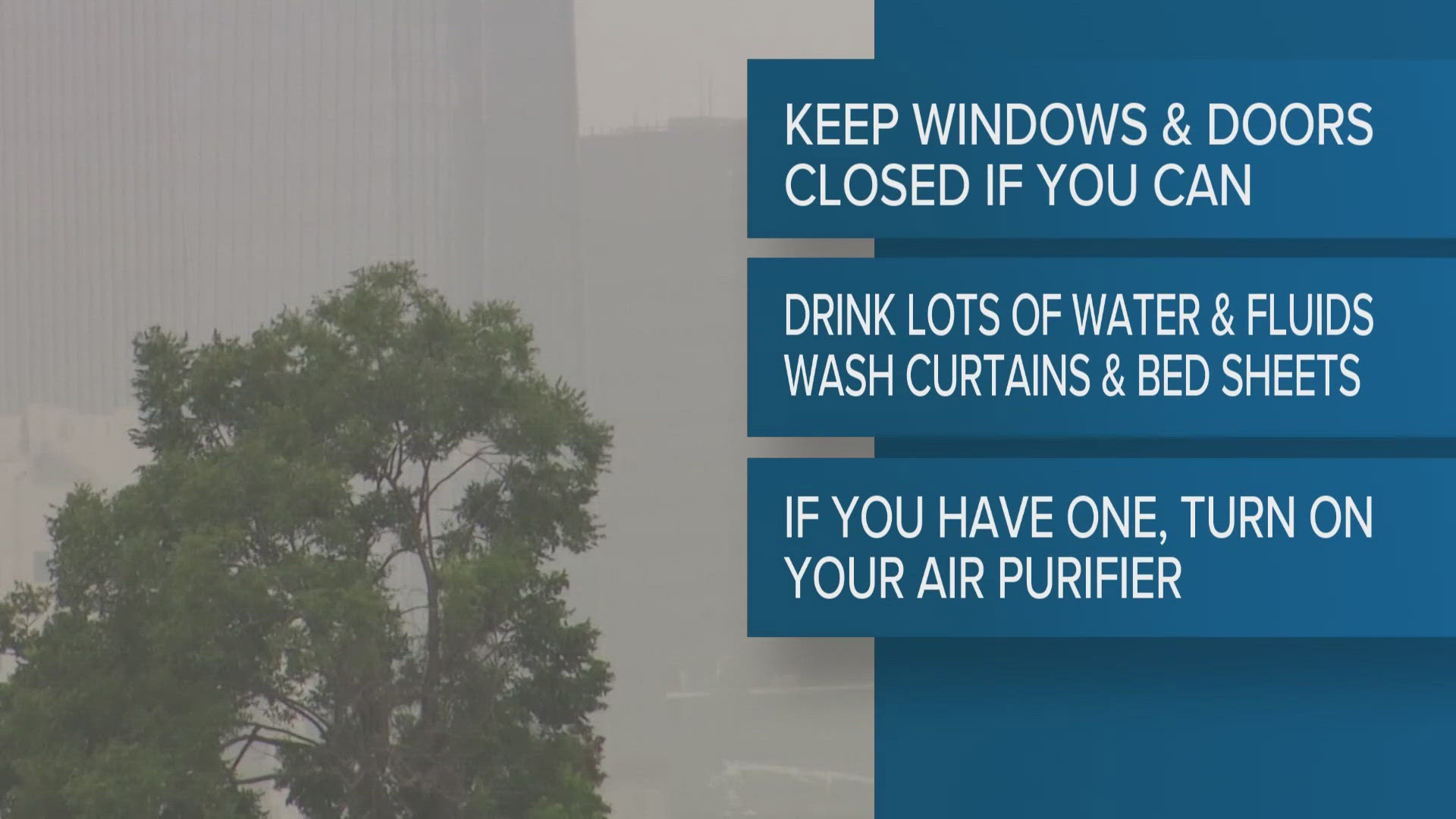You might feel like you need to clear your throat if you head outside today. That’s because the National Weather Service says Saharan dust could be heading our way.
Now, the people it affects the most are those with asthma, COPD (chronic obstructive pulmonary disease), and other respiratory illnesses. However, it can also impact those with normal allergies.
Here are some tips you can use to protect yourself and your family if you're a part of that group.
- FKeep windows and doors closed
- Drink lots of water and fluids
- Be sure to wipe your curtains
- Wash your bed sheets and mats
- If you have one, turn on your air purifier.
Where does Saharan dust come from?
Saharan dust in the atmosphere is not uncommon this time of year. Saharan dust comes from the Sahara Desert, but that's only one part of the equation. To the south of the Sahara Desert, we have the Sahel, which is a region in Africa.
The Sahel has a semi-arid climate, which means it's a desert during some parts of the year, and in other parts of the year it gets monsoonal rainfall. It's the monsoon rains that create dust that moves across the Atlantic and eventually over Texas.
What happens is thunderstorms develop during the monsoonal season, which is from May to September, and as it happens, storms develop, and as they collapse they create outflow boundaries. Those outflow boundaries are just a big rush of air. As that air rushes through the Sahel and into the Saharan desert, it picks up dust. That dust lifts into the air and gets lofted by the trade winds and is carried thousands of miles across the Atlantic.
High pressure over Bermuda keeps that dust to the south and steers it into the Caribbean and eventually into the Gulf of Mexico, and that is what gives us the hazy skies.
The benefits of Saharan dust
For those who suffer from asthma and allergies, the Saharan dust could be a pain. The hazy skies could really affect air quality.
On the flip side, the benefit of having dust in the atmosphere is that it chokes off any tropical development because of its layer of dry air in the mid-levels of the atmosphere.
So in short, when there's dry air, you can't get clouds to develop.

